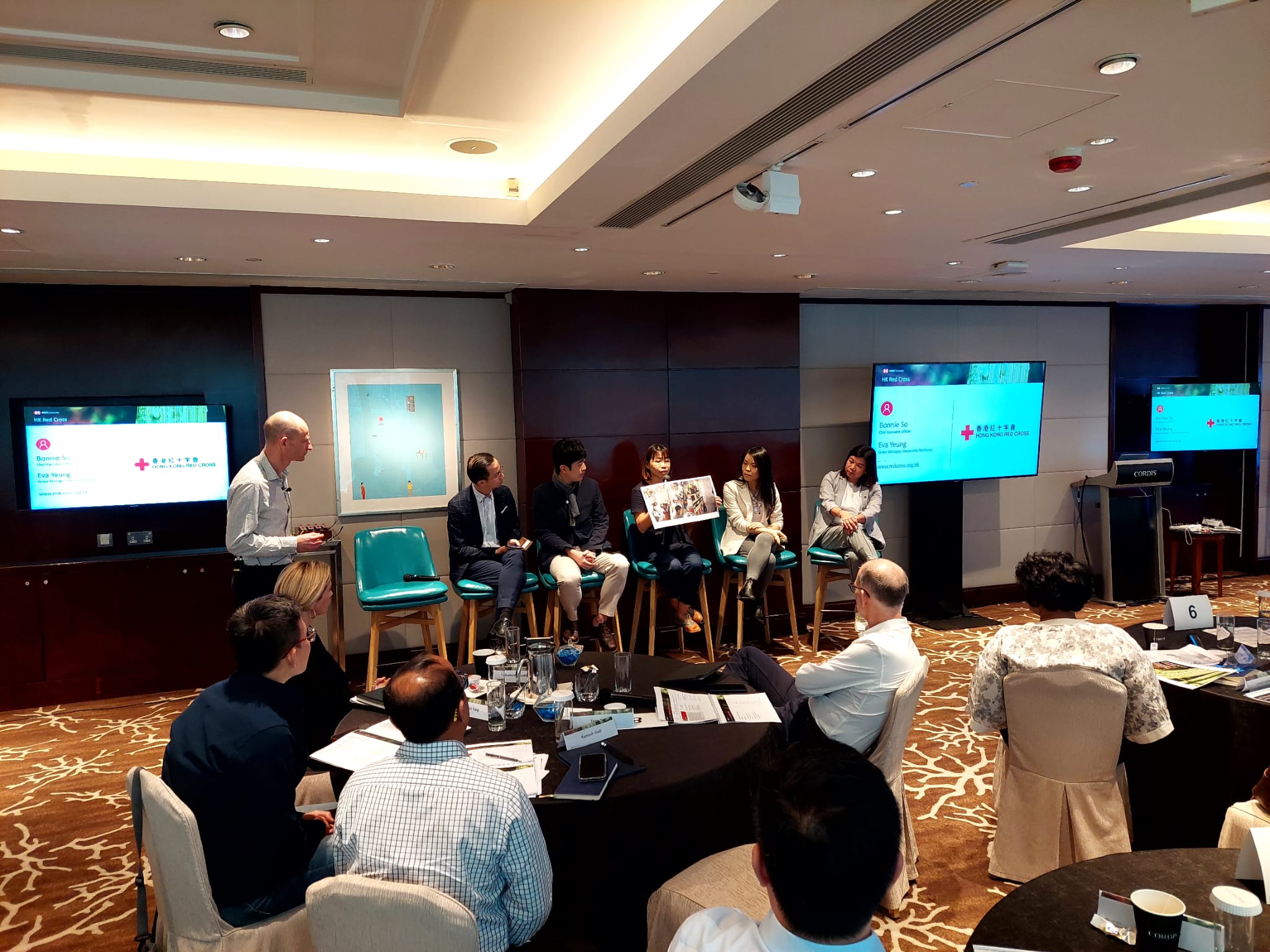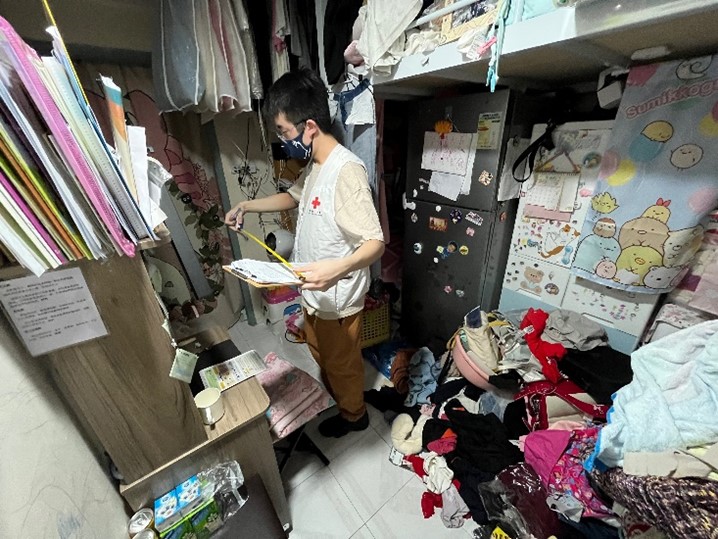From Oyster Castles to Virtual Reality: Hong Kong Red Cross’ Innovative Approach to Building Resilience

At the forefront of building resilient communities, the Hong Kong Red Cross (Branch of Red Cross Society of China) is leading exciting disaster preparedness and risk reduction initiatives from local to international levels. Notably, its nature-based solutions work has garnered widespread recognition for its impact and fostering diverse grassroots collaboration. In this DRM Practitioner Spotlight interview, Eva Y W Yeung, Senior Manager of Community Resilience Service at the Hong Kong Red Cross, shares about the organization's holistic approach to preparedness and disaster risk reduction (DRR), which seamlessly integrates traditional nature-based methods with cutting-edge technologies. Discover how the Red Cross empowers vulnerable communities in Hong Kong and beyond to build resilience in the face of crises and disasters.
Overview of Work
Can you tell us a bit about yourself and your current role at the Hong Kong Red Cross?
With nearly 20 years of experience in disaster preparedness, relief, and a passion for promoting participatory development and community resilience, I currently work as the Community Resilience Senior Manager at the Hong Kong Red Cross, a Branch of the Red Cross Society of China. Although my professional journey began in logistics at a global beverage company after graduating from business school, my true calling led me to development work within the international NGO sector, eventually joining the Red Cross Movement.
Throughout my career, I have significantly contributed to the development of community-based disaster risk reduction (CBDRR) and community resilience (CR) programs, including increasing the adaptation of community engagement and participation concepts through programming in Mainland China and Hong Kong. This work involved developing program frameworks contextualized to the characteristics of local communities and promoting these through training curricula and materials to strengthen the capacity of local partners, communities, and institutions for enhancing disaster preparedness mechanisms.

Over the past few years, I have placed a special emphasis on enhancing resilience in high-risk areas of Hong Kong. By integrating international and local experiences, I have examined comprehensive strategies for resilient communities. One notable initiative involves introducing nature-based solutions for disaster risk mitigation in local communities, aiming to mitigate the impact of climate disasters on vulnerable populations. These projects have incorporated the potential of natural ecosystems and the power of community collaboration into disaster reduction strategies, addressing the unique challenges faced by high-risk areas in Hong Kong.
Tell us more about the work the Hong Kong Red Cross does in terms of disaster preparedness and risk reduction?
The Hong Kong Red Cross (HKRC) has dedicated teams working on disaster preparedness across various levels, ranging from local services to operations in Mainland China and international work. Our work encompasses a broad spectrum of activities tailored to different localities.
For example, at the local level, our efforts span from community-based projects focused on climate resilience and disaster risk reduction in high-risk areas to education and public awareness programs targeting the general population. These initiatives aim to build preparedness and enhance resilience within vulnerable communities.
At the institutional level, the HKRC has established robust institutional preparedness mechanisms to help respond effectively to emergency situations. This includes the formation of surge capacities and the development of comprehensive business continuity plans, ensuring operational readiness and service continuity during crises.

What current project or initiative do you find especially exciting or impactful? What makes it so?
The disaster risk reduction initiative of building a living shoreline in one of Hong Kong’s coastal areas is an interesting project that showcases the power of collaboration among community stakeholders, technical expertise, and community members. We have implemented the nature-based solution of building oyster castles underwater to mitigate wave force and reduce flooding risks. This solution not only serves as a flood mitigation measure but also provides a living habitat for marine life and enlaces biodiversity. What makes this initiative particularly exciting is the long-term commitment required to trial its sustainability. It involves not only the physical installation of the oyster castles but also the crucial aspect of encouraging continuous community participation.
Want to learn more about nature-based solutions?
Explore our specialized microsite, offering a collection of resources, case studies, training, and other materials focused on incorporating nature into Disaster Risk Reduction (DRR).
At-Risk Communities
What are the main challenges that the communities and individuals you work with face when it comes to disaster preparedness?
Awareness of potential risks and being equipped with relevant skills and tools are crucial for communities. One of the significant challenges identified is the lack of a centralized and easily accessible platform that consolidates risk information. The availability of such consolidated risk information is vital for communities to understand the potential threats they may face and develop appropriate preparedness strategies.
How well prepared are communities to meet these challenges? In your view, what could equip them better and strengthen their resilience?
Forming local community-led groups and providing training and tools is one of the key initiatives we suggest in our programs. To facilitate the dissemination of risk information and disaster preparedness knowledge, we have developed a mobile application that offers this critical information. To enhance the information flow, now we are collaborating with stakeholders to create an interactive web platform for improved risk and capacity mapping.

Impact and Priorities
Do you have any recent achievements or successes that you’d like to share with the rest of us? In your opinion, what helped achieve this success?
Our Building a Living Shoreline disaster risk reduction project has been awarded the Outstanding Collaboration Award by the Agency for Volunteer Service, an external NGO, in 2023. This recognition highlights the project's effective involvement of diverse stakeholders, including the community team, schools, religious groups, local organizations, and technical groups, who contributed significantly to the success of DRR impact in the flood-prone community in Hong Kong.
In my opinion, the key factors that contributed to this achievement were the commitment and invaluable contributions of all the stakeholders involved, as well as our dedicated team.

What are one or two top priorities for your team in the next 1-2 years when it comes to preparedness and risk reduction? More broadly, what do you think some of the key priorities should be for our country or globally in this area?
Public awareness is one of our priority service areas. Currently, we are utilizing various online platforms and virtual reality (VR) tools for general DRR education. However, I see the need to further strengthen the application of interactive tools, including immersive technologies, in the coming years to create more engaging and effective learning experiences. To achieve this, we are establishing collaborations with academic institutions conducting research in immersive technologies and promoting their use in DRR.
What advice or a lesson from your experience would you give to colleagues in other National Societies working in this space?
Within each National Society, there exists a diverse range of resources, including technical expertise, networks, funding sources, and a dedicated volunteer base. One of the key roles of the Red Cross is to identify specific needs and effectively coordinate these various resources to formulate comprehensive solutions. Engaging youth and tapping into their innovative ideas can be particularly interesting and impactful in addressing complex challenges.

What connections or collaborations outside your National Society have been most useful?
Our partnership with a group of technical professions and scholars from other organizations and universities has provided us a lot of opportunities to expand the impact of our service to wide range of the public. These partnerships have allowed us to leverage diverse expertise and create synergies that amplify our efforts to serve a wider range of the public.




